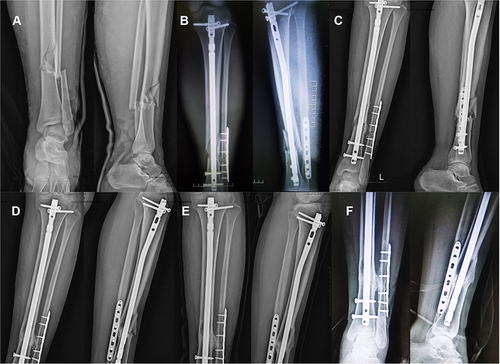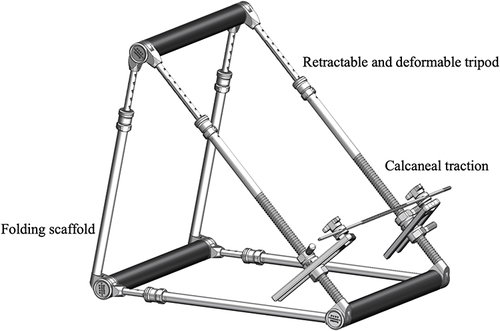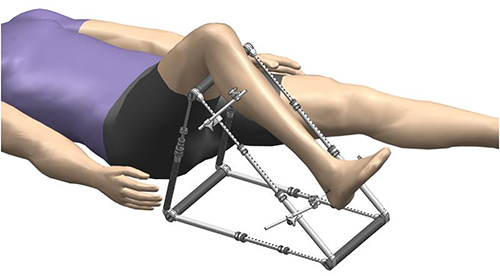Figures & data
Figure 3 Intraoperative view of minimally invasive traction repositor (MITR) application. A 20-year-old female patient with comminuted fracture of the left tibia. (A) Anteroposterior view. (B) Lateral view. A 48-year-old male patient with distal third fracture of the right tibia. (C) The MITR is connected and applied to the affected limb. (D) The minimally invasive incision for closed reduction of the tibia fracture and intramedullary nail insertion.

Figure 4 Anteroposterior and lateral X-ray films of a 20-year-old female patient with comminuted fracture of the left tibial. (A) Before surgery. (B) Immediately after surgery. (C) 1 month after surgery. (D) 3 months after surgery. (E) 6 months after (F) 12 months after surgery.

Table 1 Comparisons of Patient Demographics and Injury-Related Data Between Two groups§
Table 2 Comparisons of Operation-Related Data and Outcomes Between Two groups§


